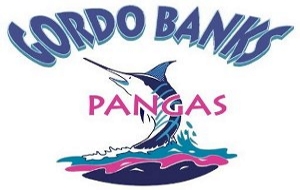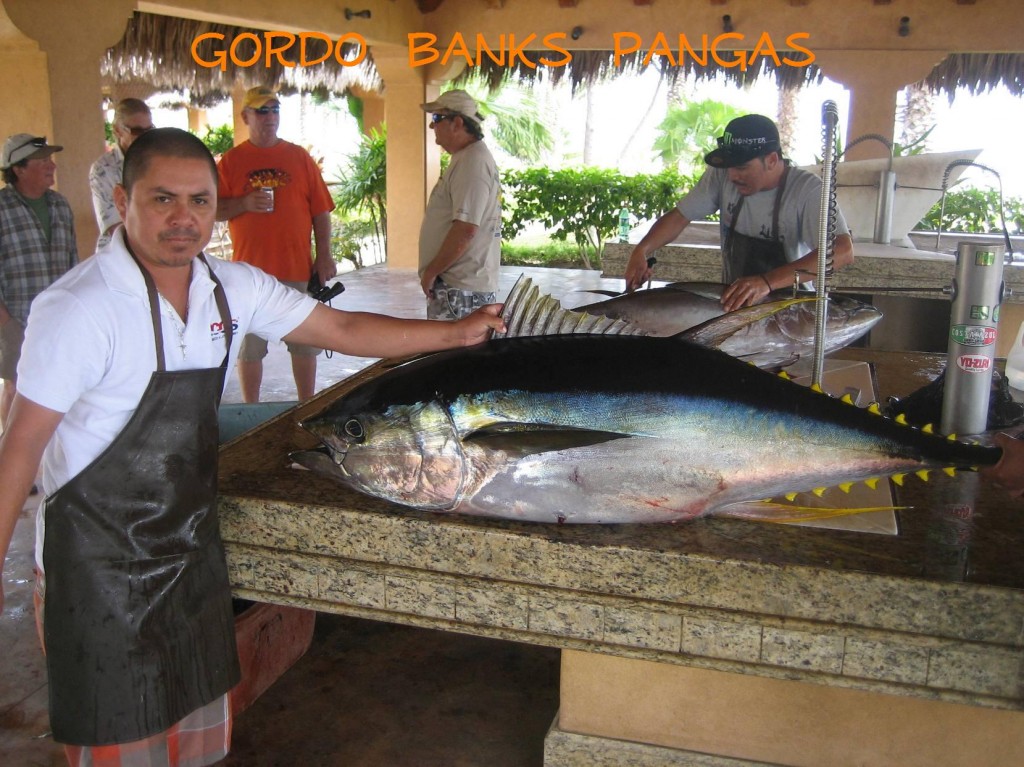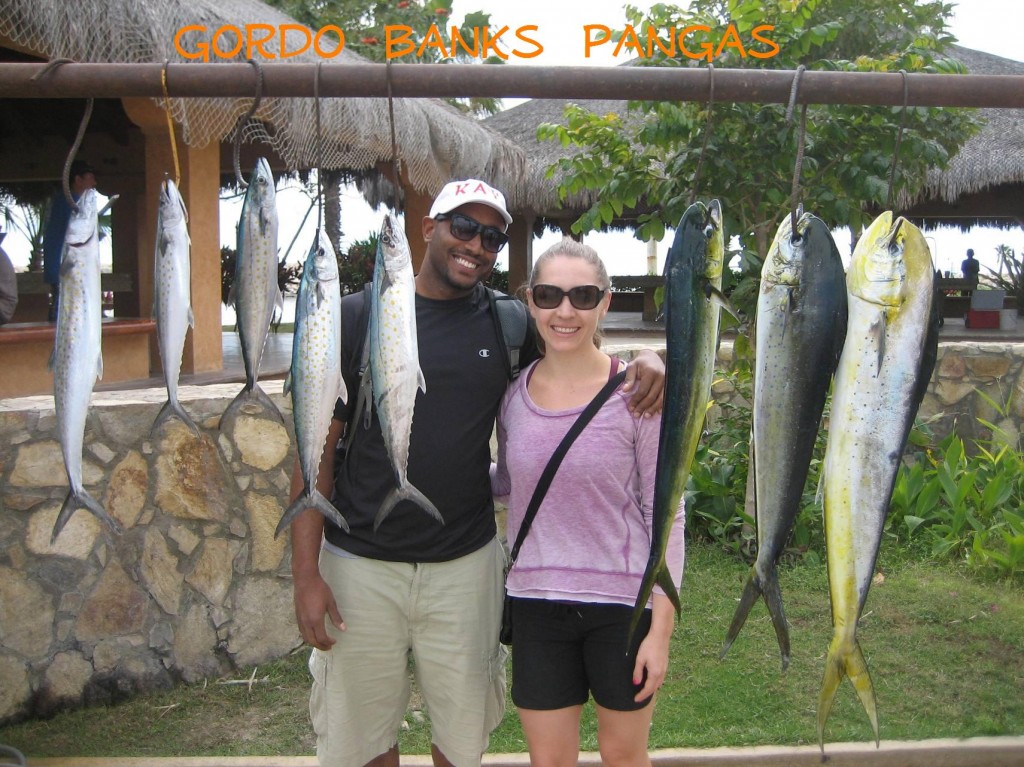February 23, 2013
Anglers –
Much of the same patterns continue into the last week of February, light crowds of tourists, cool mornings with scattered cloud cover, days warming to 75 degrees, persistent northerly winds up to 15 mph are now showing signs of residing and big numbers of whales remain in the region. Will not be long now before springtime arrives, always a favorite time to visit and enjoy ideal weather conditions and the world class sportfishing opportunities. Ocean currents are now averaging 69 to 71 degrees and clarity has been fair, considering the temperature.
Schools of mackerel seem to have scattered from the San Jose del Cabo grounds, where caballito baitfish have taken their place and sardinas continue to be netted off the beaches near the San Luis and Vinorama. Local fleets have been finding a variety of action from Punta Gorda, La Fortuna, Iman and to Vinorama. Sierra have provided the majority of action close to shore, mostly smaller sized, some reaching up to 3 or 4 pounds. Roosterfish have been encountered close to shore, just to the north of the PLC Marina Jetties, some of these fish reaching 10 pounds. Dorado have been harder to find in recent days, often being found later on when the sun warms the ocean surface some, no big schools, just a few fish here or there, average sizes ranged from 5 to 15 lb. Bottom action produced limited results on pargo, cabrilla, amberjack and triggerfish. Juvenile sized yellowtail are being found on the Pacific side of Cabo San Lucas, but no yellows reported off of Palmilla or other grounds yet. We do anticipate much improved action off the rock piles as weather transitions towards the spring season.
Striped marlin have been most numerous on the Golden Gate Bank and other Pacific grounds, the billfish are starting to shift in the direction off of San Jose as well, this migration occurs each season, all species of fish follow their preferred food source.
Yellowfin tuna were being found offshore of Cabo San Lucas, traveling with porpoise, charters that did encounter this activity reported fast action for football sized tuna. This week the Gordo Banks produced a handful of larger grade yellowfin, up to about 120 pounds, only a few numbers of these tuna were landed, but it proves they are still schooling in the area, these are the first tuna heard about on the local banks in several weeks, all of the hook ups were taken while drift fishing with chunks of skipjack, which have been very plentiful throughout the area. Encouraging to see that these fish are hanging around this late in the season, maybe they will never even leave this year.
On an extreme personal negative side, it would be hard for me not to mention that this past Saturday night our newest fleet boat, a 26 ft. Regulator, was stolen right from our panga dock area in La Playita, Puerto Los Cabos Marina. At his time the boat has not been found anywhere and investigators believe that the twin Yamaha outboards were removed quickly at sea and then the boat was shuttled and sunk offshore. This has been the operational history followed by thieves off of the East Cape region in recent times, stealing the motors and sinking the boats. This is the first of this type of crime to occur in Puerto Los Cabos Marina and hopefully these organized pirates can be arrested and brought to justice so that no one suffers the same consequences as we have. As in many similar incidents it just so happens that there were commercial shrimp boats anchored off of the Marina for several days prior and on the same night that our boat vanished, the shrimp boats also were gone, quite a coincidence, does not require being a trained detective to solve this case.
This week the combined panga fleets launching out of Puerto Los Cabos Marina sent out approximately 59 charters and anglers accounted for a fish count of: 5 striped marlin, 7 yellowfin tuna, 126 dorado, 325 sierra, 38 roosterfish, 12 jack crevalle, 5 amberjack, 14 cabrilla, 24 yellow snapper, 24 huachinango (red snapper), 12 barred pargo, 3 dogtooth snapper and 22 triggerfish.
Good Fishing, Eric




